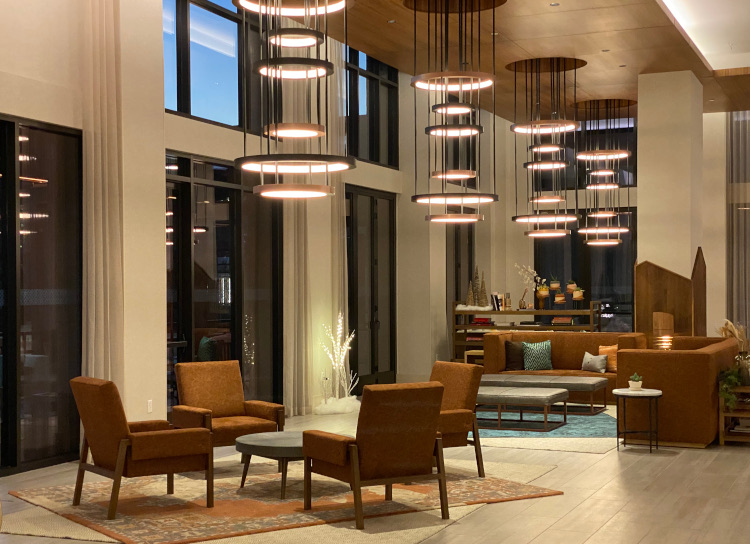Best Practices in Architectural Lighting Design
Lighting does more than illuminate a space; it creates ambiance, drives behavior, and sets the overall tone. Proper execution of lighting design and the techniques utilized determine the project's visual success and overall end aesthetic.
So, what makes or breaks successful lighting design? We’re walking you through our philosophies and best practices, so you can be well-equipped to shine.

Our Philosophy
Streetlights Residential had a boutique-hotel-vision for their residents, beginning at the lobby and translating through the amenities and units. They wanted the history and vibrancy of the neighborhood melded with contemporary and artful details. The interior design from 5G Studio Collaborative focused on three things: art, energy, and music. Here at Oldner Lighting, we like to think of each layer of a building as we would the different aspects of a human body. Architecture is like the buildings fitness; it's the foundation, some say a building has good bones. Interior design is the body's/building’s clothing; it displays personality and style with colors and textures. Finally, lighting is the character of space and is a lot like human emotion; it conveys the feelings of specific environments and can elicit a response towards certain circumstances. Comparing a building to a human depicts each element as its own unique layer that can stand alone but, in bringing it together, completes one cohesive masterpiece. Emotions alone don't make a human being who they are, just like the walls of a building won't capture that "at home" feeling.
Best Practices
So, how do you utilize lighting design to create the rich emotion of an interior or exterior space?
#1 The Big Three
The Big Three are a series of layering light techniques that make up a space's emotional timbre.
This principle is comprised of:
- Ambient: Softer light, low-intensity light that covers all surfaces in a room
- Focal: Highlights architectural and interior design with more intense light to draw the eye to what is most important.
- Sparkle: Adds brilliant light and reflections (like a shimmering chandelier).
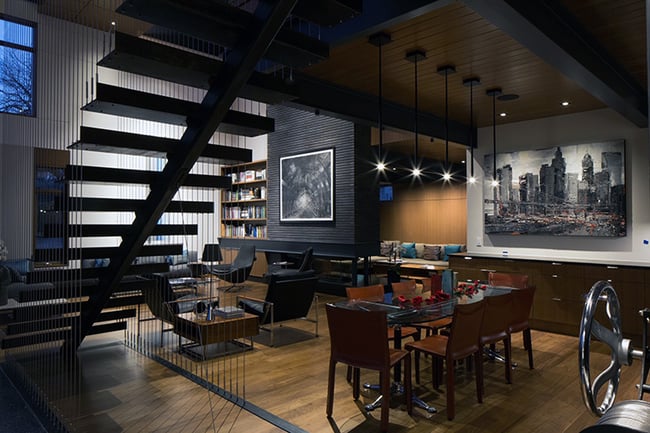 #2 Light Verticals
#2 Light Verticals
Lighting vertical surfaces like walls and/or art produce a significant visual impact. Why? Because we are vertical beings, so we naturally notice these surfaces first. With this in mind, lighting designers can utilize this technique to their advantage. Because of the vast visual impact, the more lights on a vertical surface can make a small room feel larger, especially those with lower ceilings. Thus, offering an economical option due to the remarkable transformation one fixture can have.
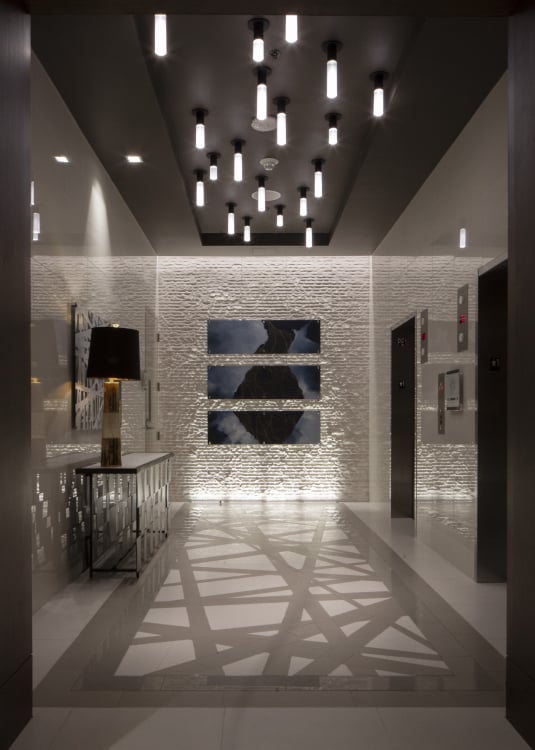
#3 Use 3-4 Lighting Techniques
A few factors determine how many lighting techniques to utilize in a singular space. The most significant being the function and purpose of the area. What do we want the end-user to feel when in the room? For example, one technique can be a functional solution, but you'll likely lack visual interest and emotional response or become boring over time. The same is true for too many techniques. While ten techniques have the potential of being executed well, without subtlety and intention, it can leave a space visually chaotic and loud.
Three to four techniques are our general recommendations. Consider a luxury residential dining room; you will likely see a pendant and downlights over the table, wall-mount lighting for art, and sconces. These provide enough variation and visual attraction without distraction or boredom. And when used with a preset dimming system, one has the power to change emotion and function at the touch of a button.
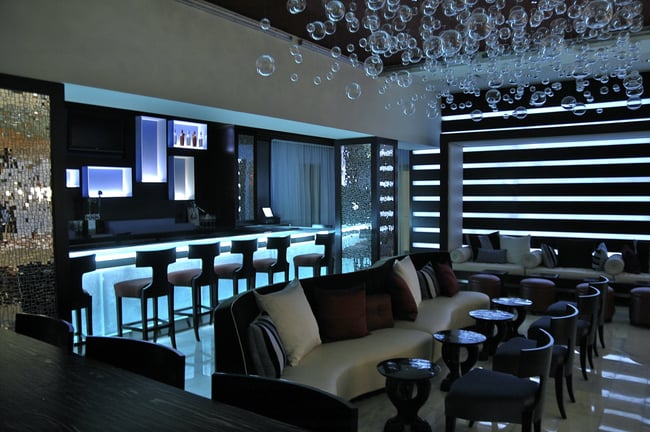
#4 Light the Pretty Things
A lighting designer's primary role is to enhance the beauty selected by the owner, architect, interior designer, and landscape designer. Each professional has added a unique layer to the overall project, and now the lighting designer determines what "pretty things" to emphasize and which ones to emphasize more than others. This process is what ultimately creates a cohesive atmosphere throughout the property. Once all the priorities are selected, determining how to light them begins. Many factors go into this process: lighting color, direction, intensity, and harshness (or softness) determined by the number of sources, color temperature, beam spread, lensing, and location of the lighting instruments. A lighting designer seeks to create harmony between the object and the lighting application, creating a specific mood or aesthetic. The designer's decision for the overall “feel” must complement the visual objectives for the space, occupant demographics, and how the area will be occupied (office, residential, retail, etc.).
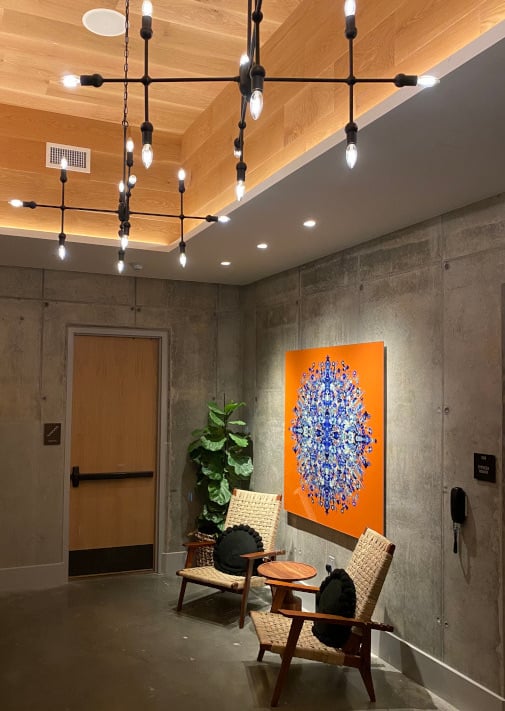
The final step is setting the controls to balance the space and define the visual hierarchy, creating harmony, attraction, and comfort.
Lighting has a beautiful complexity with the ability—and power—to transform a space completely. It is a blend of art and science, carefully and intentionally woven together to create a masterpiece. These basics principles will help you to create a foundation for a well-balanced end-result.
If you’re still stuck on where or how to begin, consider hiring a lighting designer for your next project.
Want a sneak peek into 2023's hottest lighting design trends?

